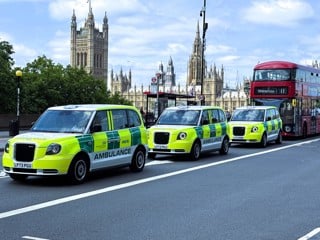Vehicle utilisation is also a priority. Crow says: “We are now starting to look force-wide and ask have we got the right number of vehicles in the right places?”
It doesn’t necessarily mean the fleet will get smaller, but it will mean the vehicles are worked harder.
“The knock-on effect is that they are going to get to their end-of-life mileage quicker and therefore need replacing a lot sooner, which could impact costs negatively,” continues Crow.
A vehicle’s operating cycle depends on its role, but historically a beat car would be on fleet for 30-36 months/90,000 miles and a traffic car for 24-30 months/120,000 miles.
However, in the wake of the financial crisis, Northamptonshire Police extended its mileages. “The age was irrelevant really,” says Crow.
Traffic cars now have an upper limit of 150,000 miles and beat cars a maximum of 120,000 miles.
Like many public sector organisations, Northamptonshire Police outright purchases its vehicles.
It did have a very small number of lease cars, but the contract has now come to an end and the last leased vehicle will be de-fleeted next year.
Operating a risk fleet in excess of £50m, it is therefore especially important that the constabulary gets the most out of what is one of its most valuable assets.
Telematics has a role to play, but onsite workshops enable Crow to keep downtime to a minimum, which is essential when the vehicles are worked so hard.
Her Majesty’s Inspectorate of Constabulary (HMIC) sets a target of 95% availability for police vehicles, but that does not take into account vehicles put out of action by an accident or negligence.
However, Northamptonshire Police is achieving a 98% availability rate and when vehicles that are off-the-road due to accidents and abuse are taken into account it’s still in the region of 96%.
It is perhaps no surprise then that half of Crow’s 20-strong transport and travel team are employed in the workshop.
It can cater for the needs of virtually the whole fleet, while specialist equipment allows a range of repairs.
“We can now also skim the brake discs, so they can be re-used,” enthuses Crow. This is saving the force up to £15,000 per year in replacement costs.
Looking after such a valuable asset is especially important come de-fleet time, when auction performance offers much-needed revenue for the constabulary’s coffers.
























Login to comment
Comments
No comments have been made yet.